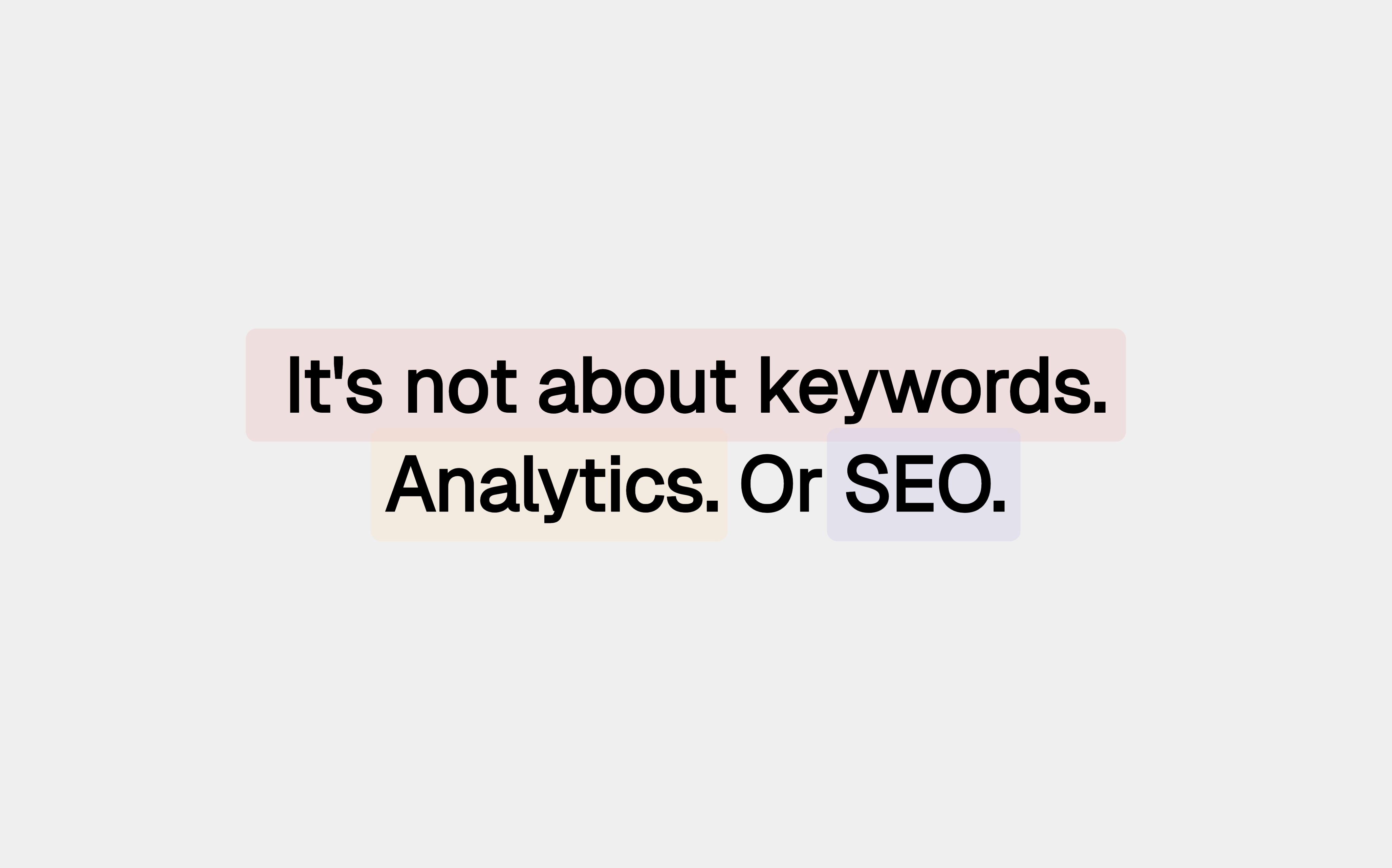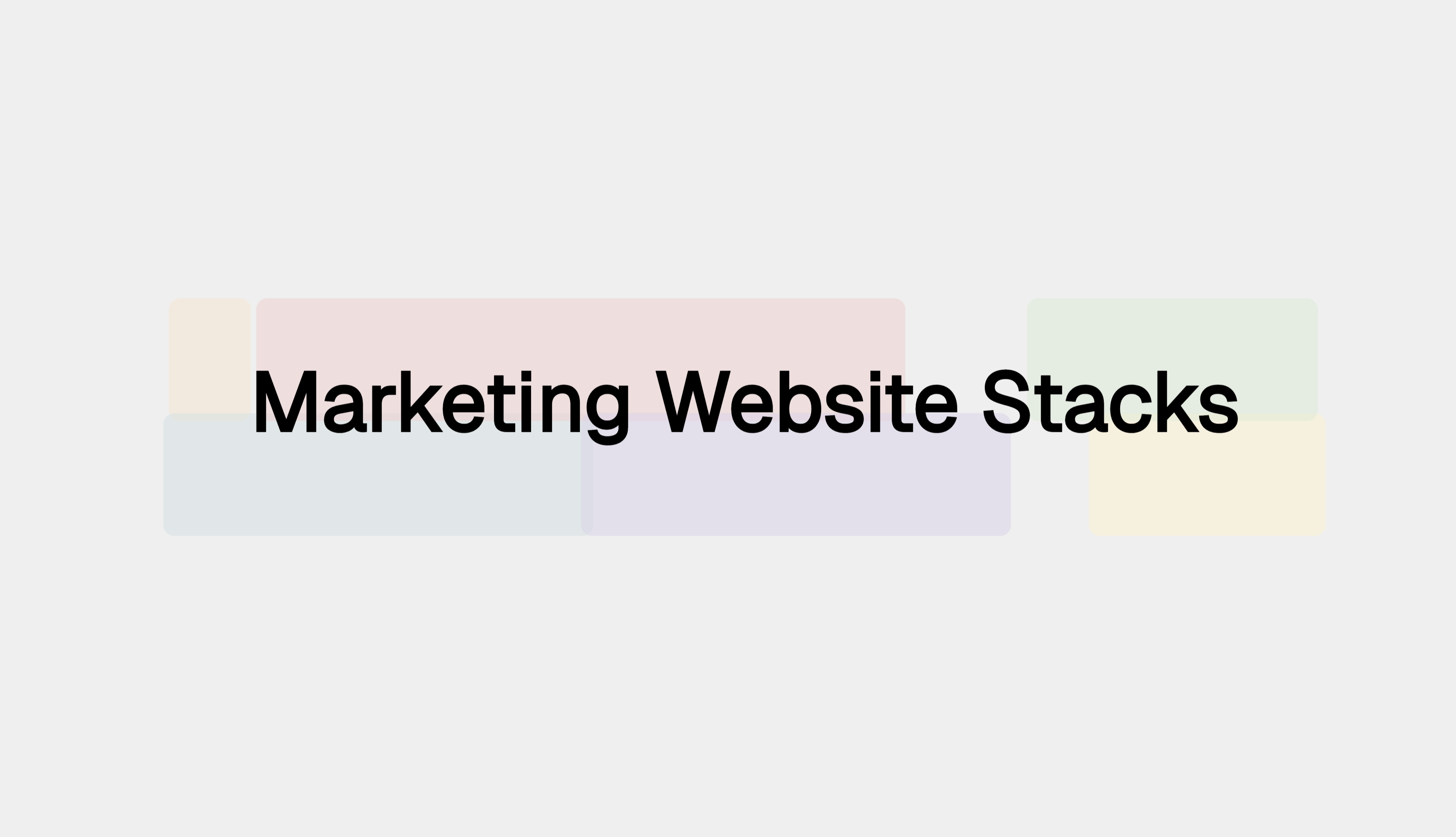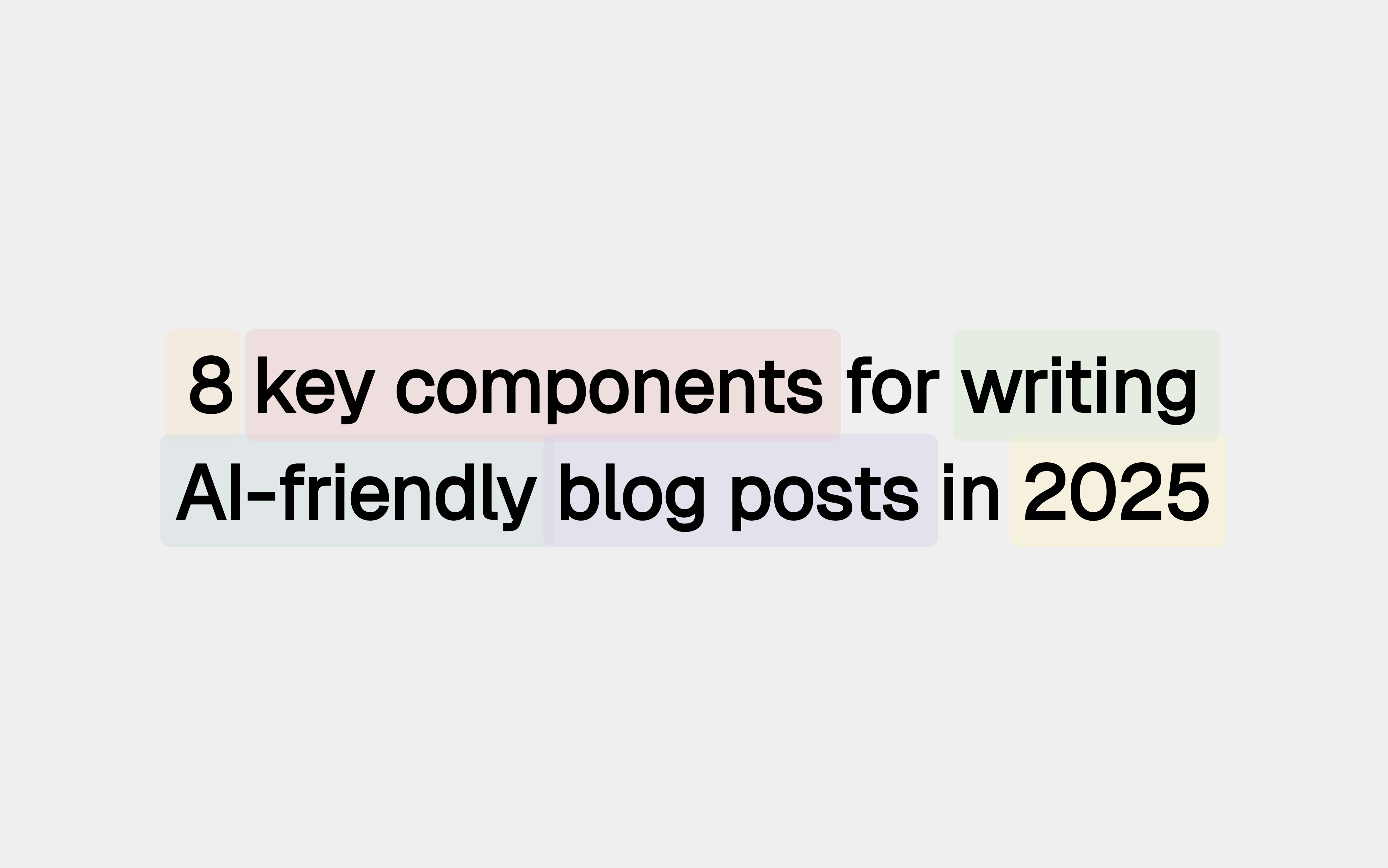Whalesync’s Software Stack 2023

An inside look at the tools that shape our company, updated for 2023.
Last year, we shared an inside look at our software stack. Many of you told us it was useful, so we figured we’d share an update in 2023 🙂.
While you’ll notice a few new names on this list, what hasn’t changed is our commitment to best-in-class tooling. At Whalesync, we believe the tools we use shape the work we do. We care deeply about the software we choose and put even more thought into designing Whalesync to live up to our own standards.
One interesting trend to note is the sheer number of tools on the list! We’re up to 40+ tools and each one is making our lives better. As software becomes cheaper and easier to create with AI, we only see this trend accelerating in the future.
Like last year, we’d love to know what other people think of our choices and any tools we missed!
Communication
💡 Knowledge Base: Notion
I’ll admit, Notion has its pitfalls. It’s so flexible that it can become a giant mess if you’re not careful. That being said, it’s an excellent knowledge base. No other tool makes it so easy to work with text, images, and data. We use Notion as our company’s source of truth. Wherever possible, we link information back to Notion, including docs, contacts, and more.
☑️ Project Management: Linear
Linear is like if Jira was designed by the best team at Apple. There isn’t another tool I’d recommend as highly as Linear. All our project management across both the dev and growth teams lives here.
🏢 Virtual Office: Gather
If you ever played Pokémon on a Gameboy, Gather looks like that, but for your office 😜. Our team gets a sense of presence by working together in Gather. We literally sit around a virtual desk as if we were in the same room. Although clunkier than tools like Tandem, Gather provides a sense of realism that surpasses any other virtual office we’ve tried.
💬 Communication: Slack
We’re exploring switching to Threads in the future, but for now, Slack gets the job done. Slack Connect has become vital to how we communicate with other organizations which makes it hard to leave.
⬜ Virtual Whiteboard: Notion
Last year we used Miro for this. Don’t get me wrong, Miro is still awesome as a virtual whiteboard, but we changed the way we do planning to be a little more structured. Our “planning whiteboard” is now Notion. This keeps us focused and gives us a single place for all notes.
💻 External Video: Zoom
As mentioned above, we use Gather as our virtual office which covers all our internal video calls. Zoom is still the way we take all external meetings. Its reliability and video quality simply can’t be matched. This is highly important for calls with customers and potential investors.
📽️ Screen Recordings: Loom
I can’t underscore how important a tool like Loom is for async communication. Most of our bug reports include a Loom, our docs are full of Looms, and we have a Slack channel called #show-and-tell where we share Looms. While there are other great screen recording tools (e.g. Tella for marketing recordings), Loom is simple and vital to how we work.
Operations
📰 SEO CMS: Airtable
Airtable is a jack-of-all-trades database tool. We use it for a ton of things, but most importantly it’s where we manage hundreds of SEO pages. We sync these pages to Webflow (using Whalesync) to display on our website and ultimately rank on Google. This wouldn’t be possible without Airtable’s powerful relational database.
📰 Blog CMS: Notion
In addition to using Notion as our wiki and virtual whiteboard, we also use Notion as a CMS that powers our blog! We write blog posts in Notion (like this one) with the help of Notion AI and then sync them to Webflow using Whalesync 🤯. Notion is an awesome place to write and collaborate on content.
🔄 Data Syncing: Whalesync
🙋That’s us! One of our guiding principles at Whalesync is to build a product we love ourselves. As we’ve expanded the capabilities of Whalesync we’ve been able to take advantage of it more frequently internally. Whalesync helps power our blog (Notion x Webflow) and our SEO pages (Airtable x Webflow).
🤖 Automations: Zapier
Zapier shines when it comes to any simple automation. Their breadth of integrations can’t be beat. We use Zapier to add waitlist sign-ups to our mailing list, ping us in Slack when new customers sign-up, add meeting notes to Notion, and more.
📝 Forms: Typeform
Are there cheaper form tools out there? Yes. But Typeform is a classic. It’s easy to use and integrated with everything we need. We’re happy Typeform users.
🙋 Customer Support: Linear
Linear is not only our project management tool but also where we do all of our customer support! Whenever a new customer support issue comes in, Zapier creates an issue in Linear. From there we add details and assign an owner. Just as Linear is fantastic for project management, it’s fantastic for customer support. Highly recommend.
👤 CRM: Attio
Attio is the Hansel of the CRM space… they’re so hot right now 🔥. It’s for good reason! Even making an account with legacy tools like Hubspot or Salesforce is a hassle. Attio looks and feels like Notion but with a powerful CRM-focused database structure. In the last year, they’ve shipped a ton of improvements to the product and it’s noticeable.
💰 Partner Rewards: Rewardful
This year we created a partner program where certified agencies can earn commission when their clients use Whalesync. Rewardful made this super easy to set up. While it would be nice if they also handled transferring money to partners, it’s easy enough to take the calculations Rewardful provides and pay partners thru PayPal.
Finance + Admin
💯 Cap Table: Carta
Cap table management software is one of those sneaky crucial pieces software tools for a company. While we’re also huge fans of Pulley, we use Carta. As the major player in the space, they’ve created an offering that is hard to match. Onboarding can take some time, but once you’re onboarded it’s a great tool.
🗝️ Password Management: 1Password
We used to use Dashlane which mostly worked well, but it’s very aggressive in auto-filling passwords. This eventually became too annoying for the team so we looked for other options. We eventually landed on 1Password which has been everything we’ve needed and more. I can’t underscore how important having a password manager is when you’re more than one person. Not to mention the security benefits.
👫 Payroll: Gusto
Gusto makes payroll and HR easy. It’s that simple. Adding new employees is a breeze and auto-payroll works each week. Gusto is integrated with Quickbooks, so your payroll and tax accounting are always correct. My one gripe is that they raised prices on existing customers without much warning, but still well worth it.
🇵🇭 International Payroll: Deel
You’ve probably noticed Deel’s meteoric rise in recent years. I’m here to tell you the hype is real. Deel could not have been any easier for hiring international contractors. They have a step-by-step process that takes maybe 10 minutes to complete and you’re now able to hire abroad. Incredible.
💸 Payments: Stripe
You know Stripe. Stripe is the bomb. No further questions 😝.
🧑⚖️ Legal Docs: Clerky
Quality legal docs are essential. Lawyers are expensive. Enter Clerky. It’s the one legal paperwork company praised by actual lawyers. We created and distributed SAFEs for fundraising entirely through the platform.
💳 Credit Cards: Brex
Your business needs a credit card. Brex handles that for you and more. There are now plenty of competitors in the space that I’m sure are great as well, but Brex has offered everything we could have wanted for our business cards.
🏦 Banking: Mercury
This has been an interesting year for startup banks 😅. *Disclaimer - this is not financial advice, but our experience with Mercury has been great as a user. Even creating an account at other banks can be a pain. With Mercury it’s delightful and modern.
💱Bookkeeping & Federal Taxes: Fondo
Fondo does startup bookkeeping and taxes. They’re not strictly a software company, but I wanted to include them because our experience has been superb. Their customer support is top-notch and they also helped us with tax credits! One of my absolute favorite companies.
💴 State Taxes: Taxjar
Filing local taxes in any state is a pain. It’s especially annoying once you have to start doing it in multiple states. Taxjar’s “auto-file” does exactly what you would expect. As Stripe’s preferred partner they have an integration that works smoothly. It’s worth the money to not have to deal with government forms each month.
📈 Financial Planning: Runway
Runway is the first financial planning software I’ve seen that’s as aspirational Notion or Linear. They’re building a tool that they hope can be the center of your company’s orbit helping with all planning and major decisions. Even at the early stages, it’s useful to model out some basic projections to decide where and when to spend.
🪄 Virtual Assistance: Magic
I had heard about the benefit of VAs before but assumed it was too hit or miss to be worth it. We ended up giving it a shot through Magic and can’t imagine going back! They sourced an absolute rockstar VA who’s been with us for the last 6 months.
Development
✍️ Database Tooling: Basedash
Basedash lets you build apps and internal tools on top of your production database. This lets you empower the non-technical people on your team to do more. It has important features like permissions and activity logs. Big fan of the team as well.
🌌 Database Interface: Outerbase
Outerbase is a relatively new entrant for us, but we’ve been super impressed so far. It lets you view, update, and visualize data in your production database. It’s EZQL querying system (where you can run SQL queries using plain language) is out of this world 😜.
🦊 Gifs: Gifox
Gifox is a Mac app that makes it super easy to create GIFs. We use it a ton to make our docs more animated. The only complaint I’ve ever heard about it is that it’s not available on Windows. Great app!
📸 Screenshots: CleanShot X
CleanShot is a Mac app that lets you quickly take screenshots and then annotate them. They’ve got some awesome features like scrolling screenshots that make it a pleasure to use. Great for bug reports, instructions, and async communication.
🦋 Beautiful Screenshots: Wrap.so
While CleanShot handles our “day-to-day” screenshotting needs, Wrap.so is an awesome tool for screenshots that need to be displayed in marketing materials. It automatically adds a gradient background and borders making your screenshots professional in seconds.
🚩 Feature Flags: LaunchDarkly
Feature flags help us ship quicker and with more confidence. We can roll out features to select users or roll back features if there are problems. LaunchDarkly is one of the biggest players in the space and we’ve had nothing but a good experience so far.
⏪ Session Replays: Highlight
Highlight is an open-source monitoring platform. They handle everything from session replays to debugging and alerts. We use the session replay feature to find places in our product we can simplify or improve.
🛠️ Internal Tools: Retool
Retool is a low-code tool that lets you create UIs and internal tools on top of your production data. While some of the other tools on this list are quicker and don’t involve engineers, Retool is very powerful. We run many important internal operations on top of Retool.
✍️ App Development: Reflex
Reflex lets you build entire web apps with just Python. It's pretty simple to start with and has >19,000 stars on Github.
👀 Computer Vision: Roboflow
A little bit of a bonus one here as we only tested with Roboflow, but it was such an awesome product we had to include on the list. It gives you everything you need to build and deploy computer vision models.
Design + Communication
🌎 Landing Page: Webflow
If you’re just quickly testing an MVP, use a dead-simple landing page builder like Popsy. For pretty much any other type of site, you should be using Webflow. It has a learning curve, but once you learn it there is no going back. Webflow gives you complete design control without a developer. It is a no-brainer for any business.
🎨 Design: Figma
Figma is another one of those no-brainer tools. If you have a designer, odds are they’re using Figma. Even if you don’t have a designer, Figma is great for founders or scrappy PMs to quickly throw together designs. It’s easy, it scales… there’s a reason they were acquired for $20B.
🆘 Help Docs: Gitbook
We used to use Notion to manage our docs, but as our product expanded so did our documentation. It became apparent that we needed a dedicated documentation solution and Gitbook was the answer. As the name implies, Gitbook uses git principles to enable users to submit and merge changes. It’s bee night and day for us.
🕹️ Demos: Arcade
Arcade is a new tool that makes it easy to create interactive demos. The Chrome extension records your screen as you click thru the web. It then lets you convert each click into an explanatory hotspot. We use Arcade to inject demos into our blog posts.
📜 Tutorials: Tango
Tango exploded onto the scene this year even being named one of Google’s 12 favorite Chrome extensions. The app lets you click thru the web to automatically create a step-by-step tutorial guide. We use Tango to create simple demos we add to our docs.
✉️ Email Marketing: Loops
We used to use MailerLite and before that Mailchimp. When Loops finally came along we couldn’t have been more relieved. MailerLite is fine, but it’s slow and clunky. Loops is a modern email marketing tool built specifically for SaaS. They also have an amazing team that is constantly shipping improvements.
Outbound Emails: Apollo
Apollo lets you send cold outbound emails through sequences. Tbh, we haven’t done a ton of outbound email in the life of the company, but whenever we do Apollo makes it easy.
📽️ Video Editing: Descript
Descript is one of those tools that is straight-up magical the first time you use it. You upload videos to Descript and they quickly transcribe it. What makes Descript so powerful is that you can then edit your video by editing the transcribed words. It makes video editing easy for complete novices.
📣 In Product Announcements: AnnounceKit
AnnounceKit lets you add pop-ups, modals, or a dedicated announcements page in your app. We use this every week to share out latest product updates. This is one of those products that every startup eventually needs. I’ve heard good things about others like Canny, but AnnounceKit works well for us.
🤖 ChatGPT
I’m sure you’ve read enough about ChatGPT this year, so need to add more. It’s a jack-of-all-trades tool we’re still learning to use best, but it can be a great editor for content.
Web Analytics
🆙 SEO: Semrush
Semrush and Ahrefs seem to be the two biggest players in SEO. We went with Semrush since it seemed slightly more robust than Ahrefs. Semrush’s Keyword Magic and Keyword Manager tools have been terrific for kickstarting our SEO strategy.
📊 Website Analytics: Google Analytics
GA (or something like it) is a must these days. GA allows us to see how many visitors we have to our website, the most popular pages, and their conversion rates. I don’t have much great to say about GA, but it does get the job done.
Personal
📩 Email: Superhuman
Yes, I know $30/mo for an email client on top of Gmail is a lot. But if you send a lot of email it’s worth it. If you don’t, it’s probably not. I send/receive dozens of emails every day, so it saves me time and makes my work that much more stress free.
📅 Calendar / Task Management: Motion
Before Motion, I constantly opened and closed a Google Calendar tab to check my schedule. Motion lets you open up your calendar and to-do list by typing “opt-c” at any moment. It seems simple but saves tons of time.
📕 Article Bookmarks: Pocket
Simple, effective bookmarking. The chrome extension saves an article to Pocket in one click. On iOS it takes two.
📥 Mail Batcher: Mailman
I have three main email addresses. Across them, I used to get bombarded with emails throughout the day. I needed a better way to manage this… enter Mailman. Now all my personal emails are batched in the afternoon, so I can get more work done distraction free.
🎨 Browser: Arc
Arc is the first browser that I think has a real chance of competing with Chrome. It’s beautifully designed and has unique features that actually make it feel like a different experience than a normal browser. It took me a week to get used to, but now I’m hooked.
Subscribe for more
Stay up to date with the latest no-code data news, strategies, and insights sent straight to your inbox!
Thank you for subscribing!
Related posts












.svg)




.svg)


